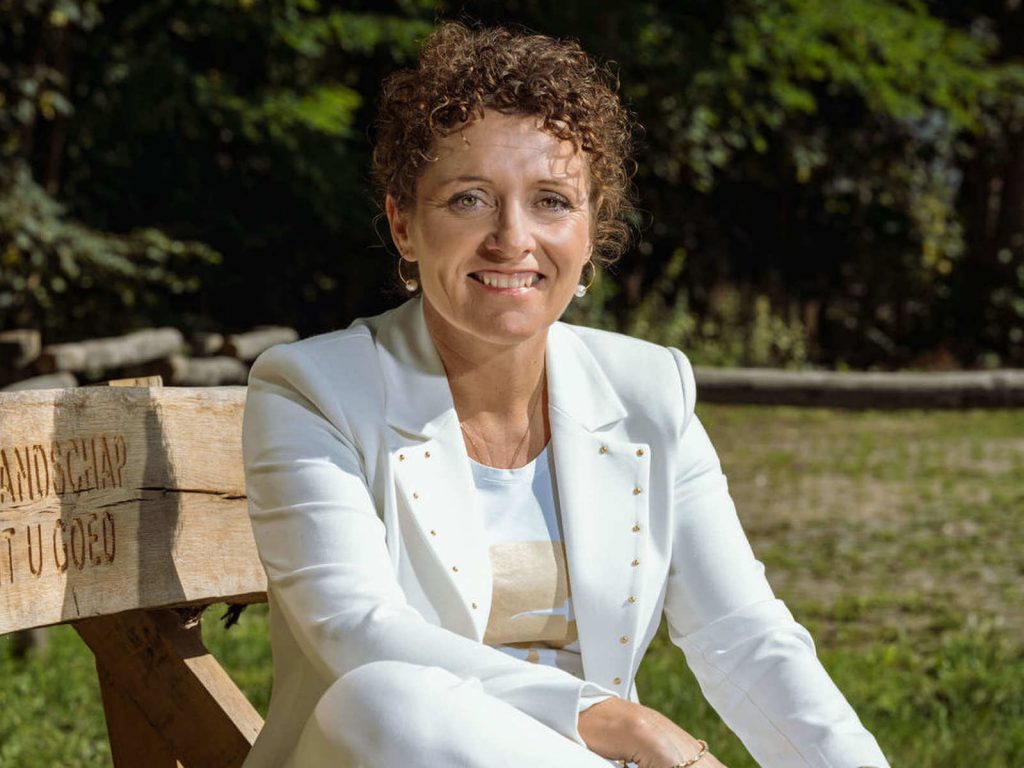“Murder strips should disappear from the dictionary forever.”
Flemish Minister of Mobility and Public Works Lydia Peeters has made cycling a real top priority in her policy. According to Flemish Minister of Mobility and Public Works Peeters, drones can improve our VeloVeilheid. This includes detecting conflict situations before there are any casualties.
In high traffic situations or at major events such as bike races, drones can be used to monitor the situation in real time. They can identify potentially dangerous situations before they occur and pass on alerts to the relevant authorities or participants.
Of course, drones can certainly contribute to the safety of cyclists on the road. Drones can be used to observe traffic patterns and motorist behavior. This information can be used to identify dangerous roads and intersections, as well as times when cyclists are most at risk. Based on this data, city planners can take appropriate measures, such as improving infrastructure or adjusting traffic lights.
bicycle safety
Drones can be used to make educational videos about bicycle safety. These can show realistic scenarios and explain how cyclists can stay safe on the road. However, using drones for these purposes would involve regulatory and privacy concerns. In addition, it would be necessary to set up systems for effectively managing and interpreting the collected data.
“We are working hard in the field and the achievements are gradually becoming visible. Quality infrastructure is a basic requirement for safe bicycle traffic, which is why we must strive to maintain the investment rate of at least 300 million euros annually. In short: we want to anchor the high financial injections in the future. The ambitious bicycle policy must not stop after this legislature. We have set the bar high in terms of cycling infrastructure and that bar must remain high or even be set higher. Get rid of 'kill lanes' and 'nothing paths', sooner rather than later.”
Flemish Minister of Mobility and Public Works Lydia Peeters
bicycle policy plan
The previous bicycle policy plan dates from 2016 and is outdated. For Lydia Peeters (Open Vld), 'killer strips' must disappear from the dictionary for good. Never before has so much been invested in cycling infrastructure as under Minister Peeters. During this legislature, Peeters will release no less than 1,4 billion euros for safe and comfortable cycle paths. In 2017, for example, just over 100 million euros were invested. In 2023 alone, this will involve 446 bicycle yards on and along our regional roads. In addition, this Flemish government, under the impulse of Minister Peeters, also supports the provinces and local authorities in implementing their cycling ambition.
The Minister wants to tackle at least 2040 dangerous intersections every year by 125, she states in her Cycling Ambition and the most innovative plan, the drones that have been deployed via the MIA project (Mobility Innovative Approaches) to neutralize traffic hazards in the short term , are technology that should map everything better. For some, the name 'smart drones' already raises questions. The images from the cameras received via the drones must be analyzed by humans. “We have been mapping dangerous traffic situations for 50 years, the problem is that we rarely solve them 'smartly'”, Herman Willemse tweets in response to the plan.
Nevertheless, we learn from the pilot projects in which the aircraft are sent into the air above potentially dangerous points and detect conflict situations even before casualties occur. The yield is enormous: “In a very short period of time we can map traffic situations, assess them and proactively tackle potential conflicts,” says traffic expert Tom Brijs (UHasselt).

In her Cycling ambition emphasizes Minister Peeters that further investments are and will remain absolutely necessary. Everyone should have the opportunity to move around by bicycle. That is why the ambition is that in 2040 every Flemish person has access to a (shared) bicycle and that everyone – regardless of age, gender, social class, culture or health – feels safe and comfortable on a bicycle.
“Data collection, innovation and experimentation are crucial for a groundbreaking cycling policy. By experimenting with smart technologies and new materials today, we are building a truly ambitious future for the bicycle,” says Minister Peeters.
The technology has meanwhile been applied to three so-called gray bottlenecks; places where accidents do not immediately occur, but where road users still do not feel safe. The Schoolstraat in Beringen is one of them. There the drone was sent into the air twice, in the morning peak and in the evening. The drone images also reveal turning and turning problems, crossing behavior or car parks that serve as shortcuts.
The results were according to HLN meanwhile discussed with the city of Beringen and the Agency for Roads and Traffic and the first adjustments have already been implemented, reports the Peeters cabinet. For example, the children's crossing was moved so that it is “more in line with the natural walking lines” and a small side street was closed.





